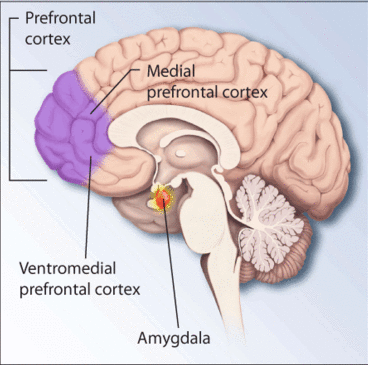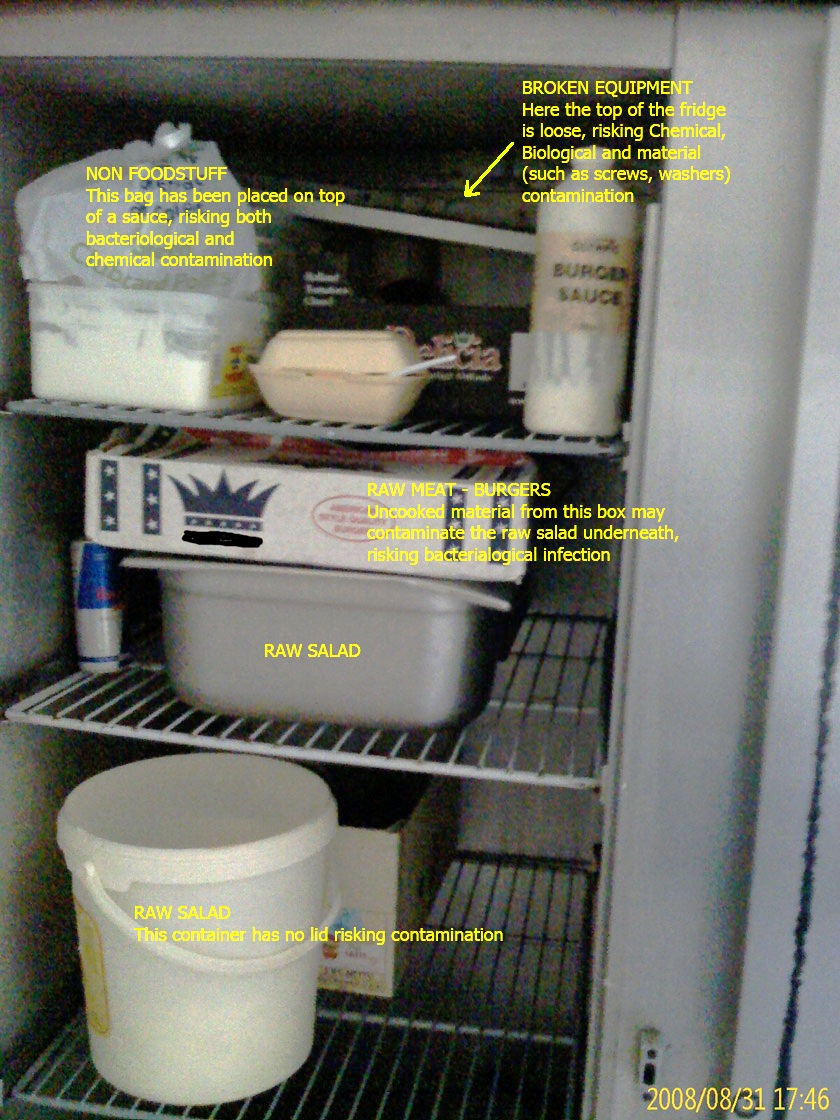|
Emetophobia
Emetophobia is a phobia that causes overwhelming, intense anxiety pertaining to vomit. This specific phobia can also include subcategories of what causes the anxiety, including a fear of vomiting, being vomited on, or seeing others vomit.Lipsitz, Joshua D., ''et al''. "Emetophobia: Preliminary Results of an Internet Survey." ''Depression & Anxiety'' (1091–4269) 14.2 (2001): 149-52. Emetophobes might also avoid the mentions of "barfing", vomiting, "throwing up", or "puking." It is common for those who suffer from emetophobia to be underweight or malnourished due to strict diets and restrictions they make for themselves. The thought of someone possibly vomiting can cause the phobic person to engage in extreme behaviors to escape from their anxiety triggers, e.g. going to great lengths to avoid situations that could be perceived as "threatening". Emetophobia is clinically considered an "elusive predicament" because limited research has been done pertaining to it.Davidson, Angela L. ... [...More Info...] [...Related Items...] OR: [Wikipedia] [Google] [Baidu] |
Emesis
Vomiting (also known as emesis, puking and throwing up) is the forceful expulsion of the contents of one's stomach through the mouth and sometimes the nose. Vomiting can be the result of ailments like food poisoning, gastroenteritis, pregnancy, motion sickness, or hangover; or it can be an after effect of diseases such as brain tumors, elevated intracranial pressure, or overexposure to ionizing radiation. The feeling that one is about to vomit is called nausea; it often precedes, but does not always lead to vomiting. Impairment due to alcohol or anesthesia can cause inhalation of vomit. In severe cases, where dehydration develops, intravenous fluid may be required. Antiemetics are sometimes necessary to suppress nausea and vomiting. Self-induced vomiting can be a component of an eating disorder such as bulimia nervosa, and is itself now classified as an eating disorder on its own, purging disorder. Complications Aspiration Vomiting is dangerous if gastric content enters the ... [...More Info...] [...Related Items...] OR: [Wikipedia] [Google] [Baidu] |
Vomiting
Vomiting (also known as emesis, puking and throwing up) is the forceful expulsion of the contents of one's stomach through the mouth and sometimes the nose. Vomiting can be the result of ailments like food poisoning, gastroenteritis, pregnancy, motion sickness, or hangover; or it can be an after effect of diseases such as brain tumors, elevated intracranial pressure, or overexposure to ionizing radiation. The feeling that one is about to vomit is called nausea; it often precedes, but does not always lead to vomiting. Impairment due to alcohol or anesthesia can cause inhalation of vomit. In severe cases, where dehydration develops, intravenous fluid may be required. Antiemetics are sometimes necessary to suppress nausea and vomiting. Self-induced vomiting can be a component of an eating disorder such as bulimia nervosa, and is itself now classified as an eating disorder on its own, purging disorder. Complications Aspiration Vomiting is dangerous if gastric content e ... [...More Info...] [...Related Items...] OR: [Wikipedia] [Google] [Baidu] |
Phobia
A phobia is an anxiety disorder, defined by an irrational, unrealistic, persistent and excessive fear of an object or situation. Phobias typically result in a rapid onset of fear and are usually present for more than six months. Those affected go to great lengths to avoid the situation or object, to a degree greater than the actual danger posed. If the object or situation cannot be avoided, they experience significant Distress (medicine), distress. Other symptoms can include fainting, which may occur in Blood phobia, blood or injury phobia, and panic attacks, often found in agoraphobia and emetophobia. Around 75% of those with phobias have multiple phobias. Phobias can be divided into specific phobias, social anxiety disorder, and agoraphobia. Specific phobias are further divided to include certain animals, natural environment, blood or injury, and particular situations. The most common are fear of spiders, fear of snakes, and fear of heights. Specific phobias may be caused by ... [...More Info...] [...Related Items...] OR: [Wikipedia] [Google] [Baidu] |
Travel
Travel is the movement of people between distant geographical Location (geography), locations. Travel can be done by Pedestrian, foot, bicycle, automobile, train, boat, bus, airplane, ship or other means, with or without Baggage, luggage, and can be one way or round trip. Travel can also include relatively short stays between successive movements, as in the case of tourism. Etymology The origin of the word "travel" is most likely lost to history. The term "travel" may originate from the Old French word ''travail'', which means 'work'. According to the Merriam-Webster dictionary, the first known use of the word ''travel'' was in the 14th century. It also states that the word comes from Middle English , (which means to torment, labor, strive, journey) and earlier from Old French (which means to work strenuously, toil). In English, people still occasionally use the words , which means struggle. According to Simon Winchester in his book ''The Best Travelers' Tales (2004)'', ... [...More Info...] [...Related Items...] OR: [Wikipedia] [Google] [Baidu] |
Motion Sickness
Motion sickness occurs due to a difference between actual and expected motion. Symptoms commonly include nausea, vomiting, cold sweat, headache, dizziness, tiredness, loss of appetite, and increased salivation. Complications may rarely include dehydration, electrolyte problems, or a lower esophageal tear. The cause of motion sickness is either real or perceived motion. This may include car travel, air travel, sea travel, space travel, or reality simulation. Risk factors include pregnancy, migraines, and Ménière's disease. The diagnosis is based on symptoms. Treatment may include behavioral measures or medications. Behavioral measures include keeping the head still and focusing on the horizon. Three types of medications are useful: antimuscarinics such as scopolamine, H1 antihistamines such as dimenhydrinate, and amphetamines such as dexamphetamine. Side effects, however, may limit the use of medications. A number of medications used for nausea such as ondansetro ... [...More Info...] [...Related Items...] OR: [Wikipedia] [Google] [Baidu] |
Roller Coasters
A roller coaster is a type of amusement ride employing a form of elevated railroad track that carries passengers on a train through tight turns, steep slopes, and other elements, usually designed to produce a thrilling experience, though some roller coasters aim to provide a more gentle experience. Trains consist of open cars connected in a single line, and the rides are often found in theme parks around the world. Roller coasters originate from "Russian Mountains" which first appeared in the 17th century. Invented and mostly found in Russia, these were slides made of ice that upper-class Russians would slide down. LaMarcus Adna Thompson obtained one of the first known patents for a roller coaster design in 1885, based on the Switchback Railway which opened a year earlier at Coney Island. Tracks are typically built and designed as a complete circuit in which trains depart from and return to the same loading station. One variation, a shuttle roller coaster, reverses at some p ... [...More Info...] [...Related Items...] OR: [Wikipedia] [Google] [Baidu] |
First Trimester
Pregnancy is the time during which one or more offspring gestates inside a woman's uterus. A multiple pregnancy involves more than one offspring, such as with twins. Conception usually occurs following vaginal intercourse, but can also occur through assisted reproductive technology procedures. A pregnancy may end in a live birth, a miscarriage, an induced abortion, or a stillbirth. Childbirth typically occurs around 40 weeks from the start of the last menstrual period (LMP), a span known as the ''gestational age''; this is just over nine months. Counting by ''fertilization age'', the length is about 38 weeks. Implantation occurs on average 8–9 days after fertilization. An ''embryo'' is the term for the developing offspring during the first seven weeks following implantation (i.e. ten weeks' gestational age), after which the term ''fetus'' is used until the birth of a ''baby''. Signs and symptoms of early pregnancy may include missed periods, tende ... [...More Info...] [...Related Items...] OR: [Wikipedia] [Google] [Baidu] |
Foodborne Illness
Foodborne illness (also known as foodborne disease and food poisoning) is any illness resulting from the contamination of food by pathogenic bacteria, viruses, or parasites, as well as prions (the agents of mad cow disease), and toxins such as aflatoxins in peanuts, poisonous mushrooms, and various species of beans that have not been boiled for at least 10 minutes. While contaminants directly cause some symptoms, many effects of foodborne illness result from the body's immune response to these agents, which can vary significantly between individuals and populations based on prior exposure. Symptoms vary depending on the cause. They often include vomiting, fever, aches, and diarrhea. Bouts of vomiting can be repeated with an extended delay in between. This is because even if infected food was eliminated from the stomach in the first bout, microbes, like bacteria (if applicable), can pass through the stomach into the intestine and begin to multiply. Some types of microbe ... [...More Info...] [...Related Items...] OR: [Wikipedia] [Google] [Baidu] |
Anorexia Nervosa
Anorexia nervosa (AN), often referred to simply as anorexia, is an eating disorder characterized by Calorie restriction, food restriction, body image disturbance, fear of gaining weight, and an overpowering desire to be thin. Individuals with anorexia nervosa have a fear of being overweight or being seen as such, despite the fact that they are typically underweight. The DSM-5 describes this perceptual symptom as "disturbance in the way in which one's body weight or shape is experienced". In research and clinical settings, this symptom is called "body image disturbance" or Body dysmorphic disorder, body dysmorphia. Individuals with anorexia nervosa also often deny that they have a problem with low weight due to their altered perception of appearance. They may weigh themselves frequently, eat small amounts, and only eat certain foods. Some patients with anorexia nervosa Binge eating, binge eat and Purging disorder, purge to influence their weight or shape. Purging can manifest a ... [...More Info...] [...Related Items...] OR: [Wikipedia] [Google] [Baidu] |
Dieting
Dieting is the practice of eating food in a regulated way to decrease, maintain, or increase body weight, or to prevent and treat diseases such as diabetes and obesity. As weight loss depends on calorie intake, List of diets, different kinds of Calorie restriction, calorie-reduced diets, such as those emphasising particular macronutrients (low-fat diet, low-fat, low-carbohydrate diet, low-carbohydrate, etc.), have been shown to be no more effective than one another. As weight regain is common, diet success is best predicted by long-term adherence. Regardless, the outcome of a diet can vary widely depending on the individual. The first popular diet was "Banting", named after William Banting. In his 1863 pamphlet, ''Letter on Corpulence, Addressed to the Public'', he outlined the details of a particular low-carbohydrate, low-calorie diet that led to his own dramatic weight loss. Some guidelines recommend dieting to Weight loss, lose weight for people with weight-related health pr ... [...More Info...] [...Related Items...] OR: [Wikipedia] [Google] [Baidu] |
Children
A child () is a human being between the stages of childbirth, birth and puberty, or between the Development of the human body, developmental period of infancy and puberty. The term may also refer to an unborn human being. In English-speaking countries, the legal definition of ''child'' generally refers to a minor (law), minor, in this case as a person younger than the local age of majority (there are exceptions such as, for example, the consume and purchase of alcoholic beverage even after said age of majority), regardless of their physical, mental and sexual development as biological adults. Children generally have fewer Children's rights, rights and responsibilities than adults. They are generally classed as unable to make serious decisions. ''Child'' may also describe a relationship with a parent (such as sons and daughters of any age) or, Metaphor, metaphorically, an authority figure, or signify group membership in a clan, tribe, or religion; it can also signify being str ... [...More Info...] [...Related Items...] OR: [Wikipedia] [Google] [Baidu] |








